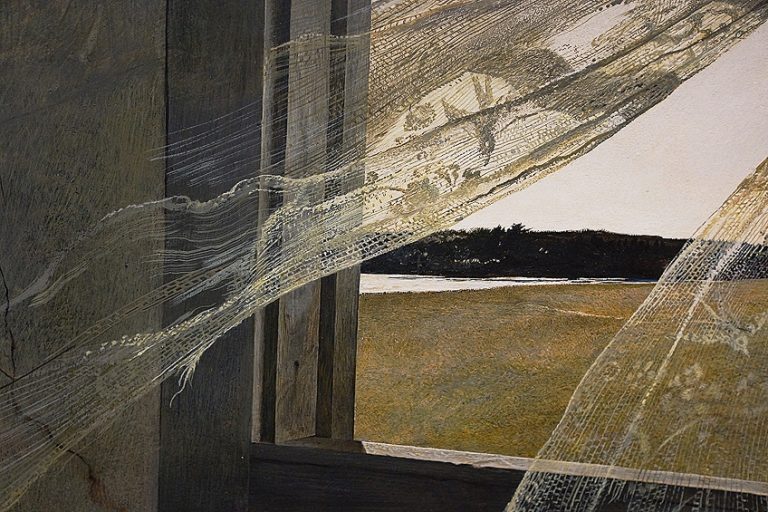“The Three Ages of Woman” by Gustav Klimt – Life in Stages
The Three Ages of Woman, created by Gustav Klimt in 1905, is a masterful exploration of the human lifecycle through the lens of his distinctive Art Nouveau style. This poignant painting captures the stages of a woman’s life—childhood, adulthood, and old age—encapsulating the beauty, vulnerability, and inevitable passage of time. The central figure, a mother tenderly cradling her child, is contrasted with the elder woman standing to the side, symbolizing the cyclical nature of existence. Klimt’s use of gold leaf, intricate patterns, and flowing lines enhance the emotional resonance and visual impact of the piece, making it a quintessential example of his innovative approach to portraiture and symbolism. Displayed at the Galleria Nazionale d’Arte Moderna in Rome, this work continues to captivate and inspire viewers with its profound representation of life’s transient beauty.
Key Takeaways
- The Three Ages of Woman by Gustav Klimt illustrates the passage of life through three stages of womanhood.
- The painting is celebrated for its symbolic depiction and stands as a testament to Klimt’s influence on Art Nouveau.
- Since its completion, it has garnered international acclaim and continues to be an iconic representation of life’s transient beauty.
Biographical Context
| Artist | Gustav Klimt (1862 – 1918) |
| Date Created | 1905 |
| Medium | Oil on canvas |
| Genre | Symbolism |
| Period/Movement | Vienna Secession and Symbolism |
| Dimensions (cm) | 180 x 180 |
| Series/Versions | Standalone work, but thematically related to Klimt’s exploration of life’s stages |
| Where Is It Housed? | Galleria Nazionale d’Arte Moderna, Rome, Italy |
| What It Is Worth | Estimated at tens of millions dollars, though the exact value can vary based on market conditions and provenance. |
Gustav Klimt, the Austrian symbolist painter, is renowned for his contribution to the Art Nouveau movement and is particularly remembered for his compelling and ornamental style. His painting, The Three Ages of Woman, completed in 1905, encapsulates the essence of human life by representing three stages of womanhood: infancy, adulthood, and old age. This masterful work won a gold medal at the International Exhibition held in Rome in 1911, affirming Klimt’s status as an artist who beautifully melds metaphor with visual elegance.

Using a rich palette and intricate patterns, Klimt conveys the cyclical nature of life in The Three Ages of Woman. The painting was acquired by the Galleria Nazionale d’Arte Moderna in Rome in 1912, securing its status as a significant piece of the Art Nouveau period. Its symbolic nature and the use of allegory showcase Klimt’s unique ability to intertwine beauty with profound thematic depth, making it an enduring subject of study and admiration.
Cultural and Historical Significance
Gustav Klimt, an Austrian painter, produced The Three Ages of Woman during a period of rich cultural transformation in Vienna. The city had become a hub for intellectual and artistic innovation at the turn of the 20th century. Klimt’s work is often synonymous with the Art Nouveau Movement, which was known for its intricate linear designs and flowing curves. This movement sought to break away from traditional artistic conventions, favoring instead a more decorative and symbolic style.
The Three Ages of Woman, painted in 1905, captures the essence of human life’s stages within a cultural milieu that was increasingly introspective about the human condition, psychology, and the role of women in society.
Klimt and the Vienna Secession
In 1897, Gustav Klimt, along with a group of artists, architects, and designers, founded the Vienna Secession. This movement aimed to create a form of art that was free from the constraints of academic tradition. The Secessionists were progressive thinkers who encouraged innovation and exploration in art, frequently creating works that were controversial but celebrated for their originality and beauty. Under the leadership of Klimt, the Vienna Secession became a critical force in the development of Art Nouveau across Europe.

Klimt’s role as a leading figure in the Vienna Secession is evident in The Three Ages of Woman, as the painting showcases the distinct, ornamental style and use of symbolic imagery that the Secession was known for. Through this painting, Klimt created a visual allegory that reflected the Secession’s desire to explore deeper psychological and existential themes.
Analysis of The Three Ages of Woman
Gustav Klimt’s The Three Ages of Woman encompasses a profound interpretation of the life cycle and femininity through its artistic elements. Here, we dissect Klimt’s technique and thematic expression within this celebrated artwork.
Use of Color and Texture
Klimt employs a rich palette to differentiate the stages of life depicted in The Three Ages of Woman. The use of vibrant hues contrasts with the somber tones to demarcate youth and old age. The child is often shown in softer, lighter colors, symbolizing innocence, while the old woman is in darker shades, signifying the end of the life cycle. Klimt’s signature gold leaf application contributes an almost divine atmosphere to the canvas and creates texture through impasto painting techniques. This combination of color and texture work cohesively to emphasize the thematic contrasts within the painting.

Symbolism and Themes
Symbolism is at the core of this masterpiece, reflecting Klimt’s association with the Art Nouveau Movement and the Vienna Secession. Each figure embodies a stage of the female life cycle—child, young woman, and old woman. Honor and glory are subtly referenced through the International Exhibition’s gold medal-winning status of the painting. The presence of colorful motifs and patterns often associated with Art Nouveau further embed the work within its cultural and artistic context.
Klimt intertwines these elements to convey the passage of time and the relentless flow of life, inviting viewers to ponder on the transient nature of human existence.
Technical Elements
The Three Ages of Woman is an oil on canvas painting where Klimt demonstrates mastery over the composition and the spatial arrangement of figures. The intimate proximity of the figures combined with the flowing contours reflects influences from contemporaries like Auguste Rodin. Another of Klimt’s famous works, The Kiss, resonates with the tenderness and emotional depth that The Three Ages of Woman also seeks to portray. The figures are enveloped in a cosmos-like background, which could symbolically allude to the universality of the life cycle, a theme resonant throughout Klimt’s oeuvre.
The Legacy of The Three Ages of Woman
Gustav Klimt’s The Three Ages of Woman is not only an iconic work of the Art Nouveau period but also a significant piece that encapsulates the essence of the human life cycle, with profound implications for both art and society.
Impact on Art and Society
Klimt, a leading Symbolist painter and a key member of the Vienna Secession, captured the stages of womanhood in The Three Ages of Woman. This painting is steeped in symbolism, depicting innocence in Spring, maturity in womanhood, and Old Age leading to Death.
The work is acknowledged for its introspective portrayal of femininity and its auras of change and decay, which transcended traditional narratives and influenced the dialogue around women’s roles in society.
- Art Nouveau impact: The piece exemplifies the intricate styles and emotive themes of the art movement, pushing forward the frontiers of art as more than mere aesthetics but as a vehicle for philosophical expressions.
- Social reflection: Presents a thought-provoking reflection on existence and the societal perceptions of age and the female identity.
Display and Conservation
The Three Ages of Woman is housed at the Galleria Nazionale d’Arte Moderna in Rome, Italy, where it has been since 1912. The painting’s acquisition reinforces its status as a masterpiece with a celebrated gold medal from the 1911 International Exhibition in Rome.
- Conservation considerations: The gallery’s role in conserving The Three Ages of Woman ensures that Klimt’s vision and the techniques emblematic of the period endure for future generations to study and admire.
- Exhibition legacy: Its continuous display indicates its unrelenting appeal and the importance placed upon it in the narrative of European art history.

The Three Ages of Woman by Gustav Klimt stands as a testament to the artist’s profound understanding of the human experience and his unparalleled ability to convey complex themes through his unique artistic language. This painting not only highlights the stages of a woman’s life with poignant realism and symbolic depth but also showcases Klimt’s innovative use of gold leaf, intricate patterns, and flowing lines that have become hallmarks of his style. By juxtaposing youth, motherhood, and old age, Klimt invites viewers to reflect on the beauty and ephemerality of life.
Frequently Asked Questions
What Does The Three Ages of Woman Symbolize in Klimt’s Painting?
In Gustav Klimt’s The Three Ages of Woman, the painting symbolizes the different stages of female life: infancy, adulthood, and old age. It captures the ephemeral nature of life and the continuum of the human experience through the depiction of a child, a young woman, and an elderly woman.
How Is the Theme of Motherhood Depicted in The Three Ages of Woman?
The theme of motherhood in The Three Ages of Woman is depicted through the central figures of the painting, where a young woman is portrayed embracing a child. This moment signifies the protection, nurturing, and maternal bond that is a fundamental aspect of the female experience.
What Techniques Did Gustav Klimt Employ in Creating The Three Ages of Woman?
Gustav Klimt employed a complex technique comprising oil painting and a profound use of gold leaf, characteristic of his Golden Phase. The intricate patterns and symbolic elements within the artwork highlight Klimt’s signature style and contribute to the depth of meaning in the painting.
How Has The Three Ages of Woman Influenced Modern Depictions of Women in Art?
The Three Ages of Woman by Gustav Klimt has influenced modern art by paving the way for more diverse and complex representations of women. Klimt’s work has inspired artists to explore the multiple facets of femininity and to depict women in various roles and stages of life, challenging traditional norms and stereotypes.
Isabella studied at the University of Cape Town in South Africa and graduated with a Bachelor of Arts majoring in English Literature & Language and Psychology. Throughout her undergraduate years, she took Art History as an additional subject and absolutely loved it. Building on from her art history knowledge that began in high school, art has always been a particular area of fascination for her. From learning about artworks previously unknown to her, or sharpening her existing understanding of specific works, the ability to continue learning within this interesting sphere excites her greatly.
Her focal points of interest in art history encompass profiling specific artists and art movements, as it is these areas where she is able to really dig deep into the rich narrative of the art world. Additionally, she particularly enjoys exploring the different artistic styles of the 20th century, as well as the important impact that female artists have had on the development of art history.
Learn more about Isabella Meyer and the Art in Context Team.
Cite this Article
Isabella, Meyer, ““The Three Ages of Woman” by Gustav Klimt – Life in Stages.” Art in Context. May 31, 2024. URL: https://artincontext.org/the-three-ages-of-woman-by-gustav-klimt/
Meyer, I. (2024, 31 May). “The Three Ages of Woman” by Gustav Klimt – Life in Stages. Art in Context. https://artincontext.org/the-three-ages-of-woman-by-gustav-klimt/
Meyer, Isabella. ““The Three Ages of Woman” by Gustav Klimt – Life in Stages.” Art in Context, May 31, 2024. https://artincontext.org/the-three-ages-of-woman-by-gustav-klimt/.











